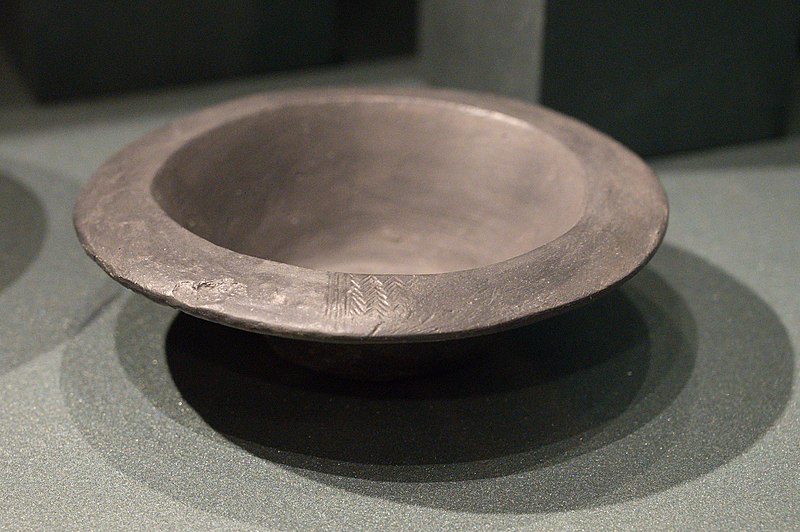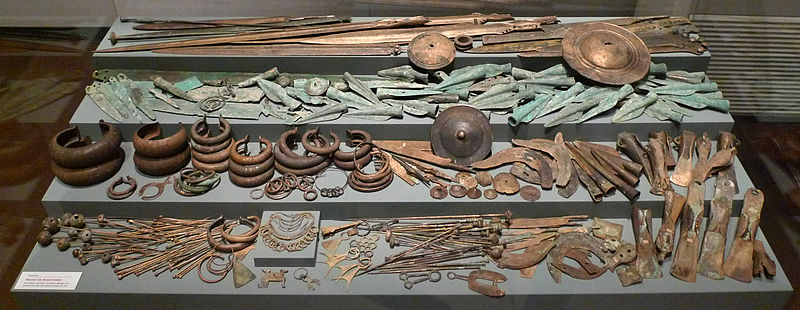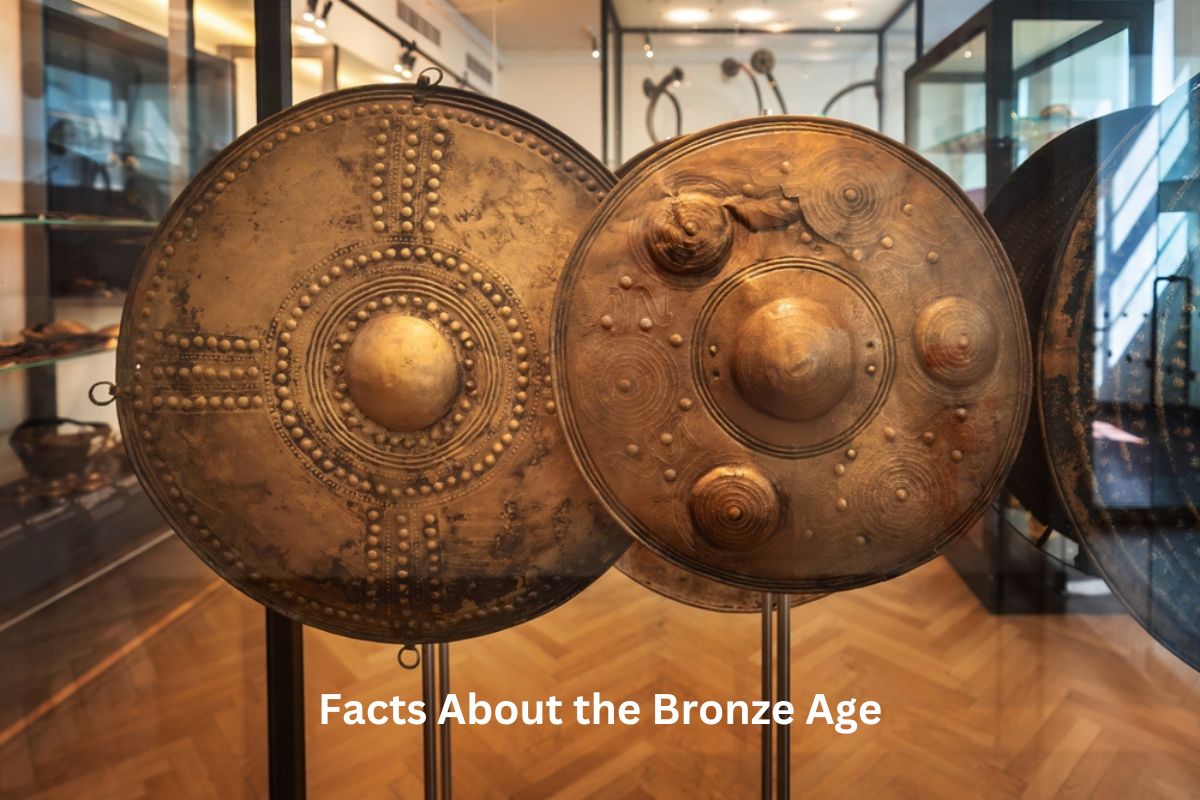The Bronze Age was a pivotal era in human history, spanning from approximately 3300 BCE to 1200 BCE, marked by significant advancements in technology, the rise of complex societies and empires, and the development of early writing systems.
During this time, bronze, an alloy of copper and tin, played a central role in shaping various aspects of life, from agriculture to warfare.
This period also saw the emergence of extensive trade networks, the creation of writing systems like cuneiform and hieroglyphics, the growth of powerful empires, and the eventual transition to the Iron Age.
In this exploration of the Bronze Age, we will delve deeper into these key aspects and their enduring impact on human civilization.
Bronze Age Facts
1. It spanned from around 3300 BCE to 1200 BCE
The Bronze Age is a period in human history characterized by the widespread use of bronze, an alloy of copper and tin. This era is generally divided into three phases: the Early Bronze Age, the Middle Bronze Age, and the Late Bronze Age.
Also Read: Prehistoric Era Timeline
The timing of these phases can vary depending on the region and culture. However, the Bronze Age typically began around 3300 BCE in some parts of the world, such as the Near East and the Mediterranean, and extended until roughly 1200 BCE when it transitioned into the Iron Age.

2. Bronze, an alloy of copper and tin, was widely used
Bronze is an alloy made by melting copper and tin together. The typical ratio is approximately 90% copper and 10% tin, although variations existed.
3. Bronze technology marked a significant metallurgical advancement
The development of bronze technology was a significant advancement in metallurgy. Bronze tools and weapons were superior to those made of pure copper because bronze is harder, more durable, and better suited for various applications.
Also Read: Timeline of the Bronze Age
This technological advancement revolutionized many aspects of society. Agriculture, for example, benefited from bronze tools, which made farming more efficient. Bronze weapons and armor improved military capabilities, leading to changes in warfare.
4. Urbanization and complex societies emerged during this period
The Bronze Age was a period of profound social change, marked by the emergence of complex societies and urban centers. Cities grew in size and complexity during this time.
Urbanization was often linked to the development of centralized political structures and the rise of early forms of governance and administration.
The increased agricultural productivity made possible by bronze tools and the establishment of trade networks contributed to population growth and the concentration of people in urban areas. Notable Bronze Age cities include Ur in Mesopotamia, Mohenjo-daro in the Indus Valley, and Thebes in Egypt.
5. Extensive trade networks connected Bronze Age civilizations
The Bronze Age was marked by extensive trade networks that connected different regions and cultures. These networks facilitated the exchange of various goods, including metals, textiles, ceramics, and luxury items.
Trade routes were established both overland and by sea. For example, the Silk Road in Asia was a major trade route that connected the East to the West, allowing for the exchange of goods, technologies, and cultural ideas.
Another well-known trade route was the Amber Road in Europe, which facilitated the trade of amber and other precious materials across the continent.

6. Writing systems like cuneiform and hieroglyphics developed
The Bronze Age saw the development and use of several early writing systems, which were crucial for recording information, administration, and communication.
In Mesopotamia, cuneiform script was created. It involved wedge-shaped marks made on clay tablets and was used for a wide range of purposes, including documenting laws, tracking economic transactions, and recording literature like the Epic of Gilgamesh.
In ancient Egypt, hieroglyphics emerged. This system used intricate pictorial symbols to represent words and concepts, primarily inscribed on papyrus and temple walls.
Linear B, an early form of writing, was discovered on clay tablets in the Mycenaean civilization. It was used to document administrative and economic matters.
7. Notable empires, including Egypt and the Hittites, thrived
The Bronze Age witnessed the rise of several powerful empires that exerted significant influence over vast territories.
In ancient Egypt, the New Kingdom period (c. 1550–1077 BCE) was a notable era of imperial expansion and cultural achievement. Pharaohs like Ramses II expanded Egypt’s borders and built impressive monuments like the temples at Luxor and Karnak.
The Hittite Empire, centered in Anatolia (modern-day Turkey), was a formidable military power. They were known for their use of chariots and their diplomatic correspondence with other major Bronze Age powers.
The Babylonian Empire, with its capital in Babylon, was another prominent empire in Mesopotamia. The Code of Hammurabi, one of the earliest legal codes, originated during this time.
8. Elaborate burial practices, including tumuli, were common
Burial practices during the Bronze Age were often elaborate and reflected the social hierarchy of the time.
Elite individuals, such as rulers or high-ranking members of society, were often buried in grand tombs or burial mounds known as tumuli. These structures were often accompanied by grave goods, including bronze weapons, jewelry, pottery, and even chariots.
These burial practices provide valuable insights into the social and economic status of individuals and the cultural and religious beliefs of Bronze Age societies.
9. The Late Bronze Age saw the collapse of many civilizations
The Late Bronze Age saw the decline and collapse of many civilizations in various parts of the world. This period of upheaval is known as the Bronze Age Collapse.
Several factors contributed to this collapse, including natural disasters (such as earthquakes and famines), climate change (possibly leading to droughts), and invasions by groups collectively referred to as the “Sea Peoples.”
The fall of major Bronze Age powers, such as the Hittites, Mycenaeans, and New Kingdom Egypt, resulted in a power vacuum and disrupted established trade routes and networks.
10. The Bronze Age laid the foundation for modern civilization and led to the Iron Age.
The Bronze Age had a lasting impact on human history. It laid the foundation for many aspects of modern civilization:
- The use of metals in tools and weaponry continued to evolve, leading to the Iron Age.
- Complex societies and urban centers paved the way for the development of governance and administration.
- Writing systems, such as cuneiform and hieroglyphics, were precursors to modern writing and record-keeping.
- Advances in agriculture, trade, and technology improved people’s quality of life.
The Bronze Age eventually gave way to the Iron Age, a period characterized by the widespread use of iron for tools and weapons.
Iron was more abundant and less expensive than tin, making it more accessible to a broader range of societies. This transition had a profound impact on warfare and agriculture.
The Iron Age led to significant cultural and technological changes, including the emergence of new empires and the spread of ironworking techniques.
